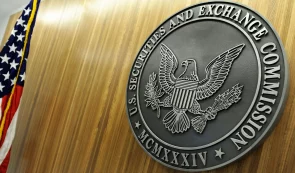Recession Alert: US Money Supply Sees Significant Decline

According to recently released data by the Federal Reserve, the US money supply has decreased for three consecutive months, the most significant drop since the Great Depression.
Decline in US Money Supply
The M2 money supply, which measures the total amount of cash, bills, bank deposits, coins, and money market funds in circulation throughout the national economy, declined by 2.24% in February compared to last year.

This figure represents a further decrease from the negative 1.7% recorded in January, making it the third month of a declining money supply.
The M2 money supply saw a decline of 3.13% YoY for the week ending March 6, indicating another possible contraction in March.
Despite the drop, the current money supply is $21.099 trillion, almost 38% higher than pre-pandemic levels.
Economic Indicators Suggest a Possible Recession in the US
The downward trend started in February 2021 when the central bank began to reverse its pandemic-era liquidity injections and reduce the balance sheet, resulting in sliding bank deposits.
Economies worldwide, including the EU, UK, and Canada, have also reported slowing or contracting M1 money supply growth.
READ MORE: Bitcoin: Market Cap Could Soar to $10 Trillion, Says Macro Guru
Economists are warning that the decline in money supply growth could signal an economic downturn, with some predicting that a recession is already underway due to the fastest rate of M2 money supply decline since the 1930s, caused by the Fed’s monetary mismanagement, according to Steve Hanke, a professor of applied economics at Johns Hopkins University.
We have not seen money supply declines like this since the Great Depression.
The contrarian position isn't that a recession will come later, but rather that it's already started.
— Mike "Mish" Shedlock (@MishGEA) April 3, 2023
Experts Debate on the Impact of Money Supply on the Economy
According to some experts, such as Federal Reserve Chair Jerome Powell, the money supply may not significantly impact the economy.
During his 2021 report to Congress, Powell explained to Senator John Kennedy that “M2…does not really have important implications” and that we may need to unlearn this belief.
READ MORE: 5 Altcoins to Watch this Week (17.04.2023 – 23.04.2023)
The Conference Board Leading Economic Index (LEI), which evaluates credit, labor, and manufacturing, has an average of negative 3.6% over the past six months.

Justyna Zabinska-La Monica, senior manager of business cycle indicators at the Conference Board, explains that although the rate of decline in the LEI has slowed down recently, it still suggests the possibility of a recession in the US economy.
Other Economic Indicators to Watch for Recession Prediction
The inverted spread between the two- and ten-year Treasury yields has been closely observed since July 2022, with a negative 60 basis point trade as of April 11.
This is regarded as the primary recession indicator, correctly predicting almost all recessions since World War II. The Fed’s preferred recession measure, the three-month and ten-year yields, has also been inverted since the end of October 2022, with a negative 167 basis point trade.
Furthermore, in March, the Institute for Supply Management’s (ISM) Manufacturing Purchasing Managers’ Index (PMI) fell to 46.3. In the past, a drop to this level has often signaled a recession.
















